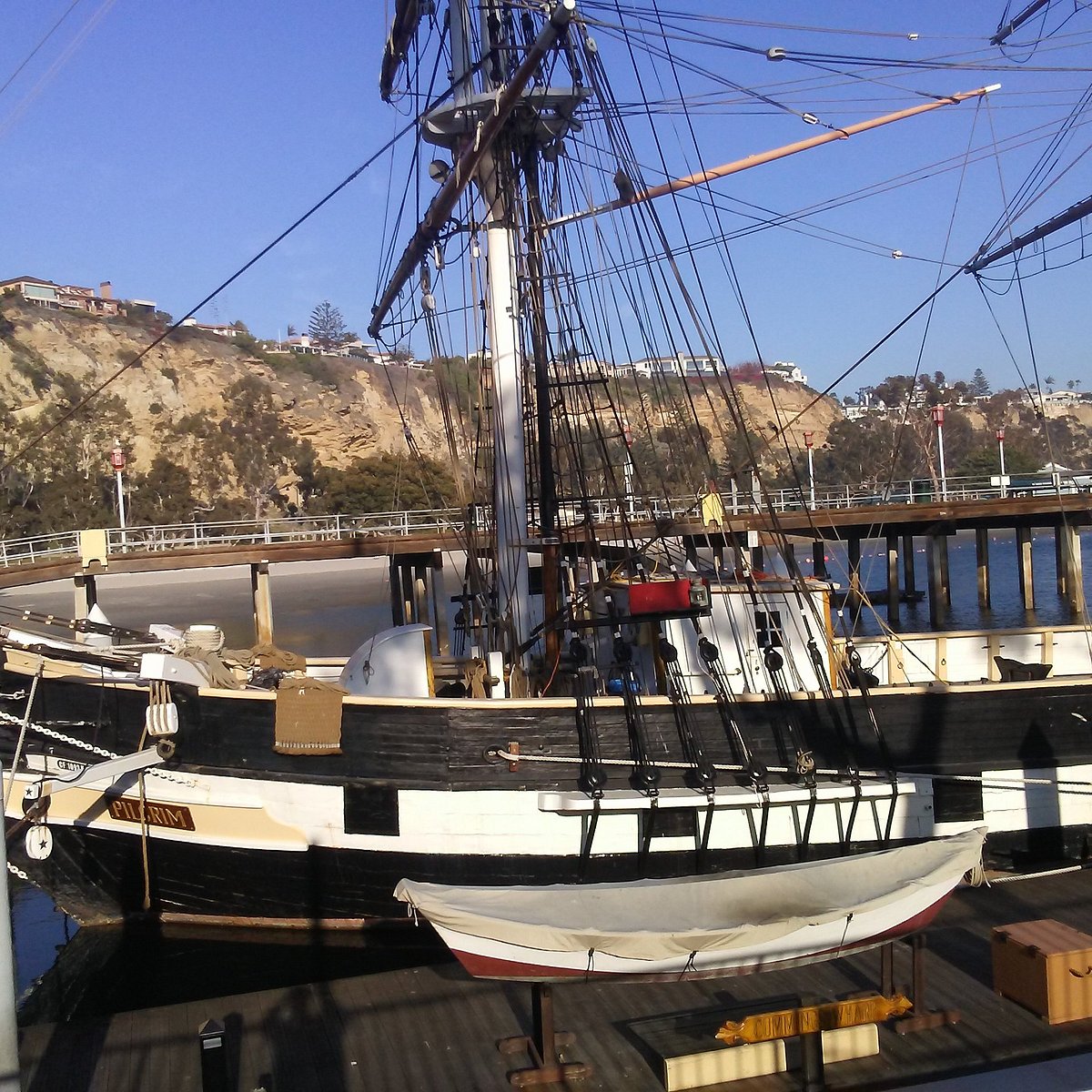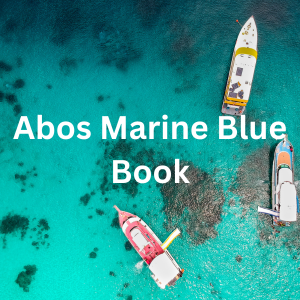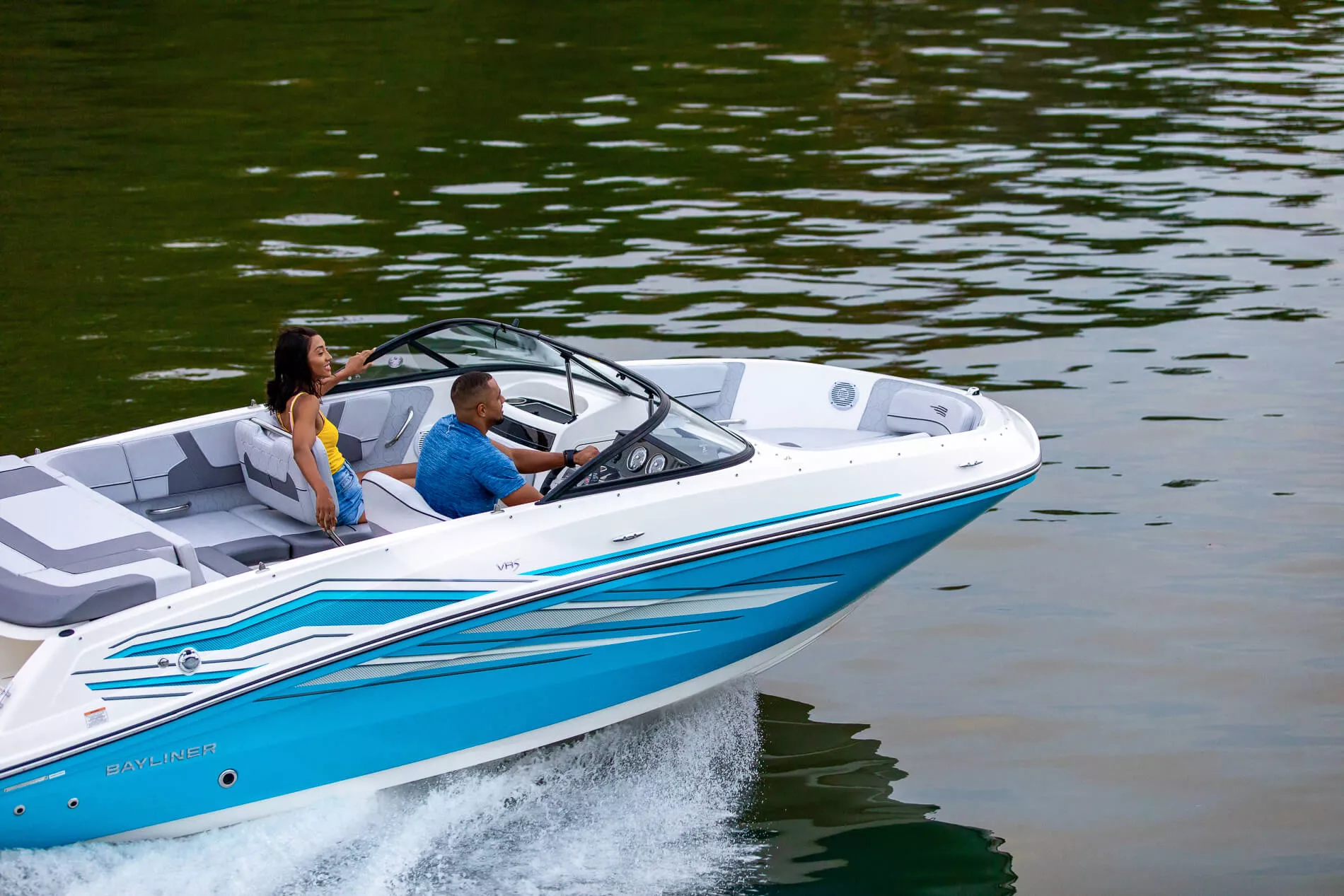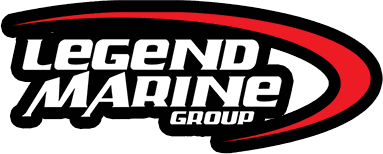Dinghy Boats
Dinghy Boat Essentials: A Compact Guide to Smart Sailing
Dinghy boats are versatile and efficient watercrafts that offer a range of uses, from leisure activities to serving as a transport vessel for larger boats. These small boats are typically under 15 feet long, making them easy to maneuver and accessible for various skill levels. Commonly powered by low-horsepower outboard motors, dinghies provide a perfect balance between functionality and affordability.
The history and evolution of dinghy boats span across many decades, with improvements in hull designs, motor types, and fuel systems contributing to their growing popularity. Today, there are countless types of dinghy boats available, each catering to specific needs and uses. From sailing to fishing to boat racing, the versatile nature of dinghies makes them appealing to a wide range of enthusiasts.
Key Takeaways
- Dinghy boats are versatile, compact vessels suitable for a variety of uses and skill levels.
- Ongoing developments in hull designs and motor technologies have expanded the range of dinghy boat options.
- Dinghies are available across different price points, making them accessible for various budgets and ownership preferences.
History and Evolution
The history of dinghy boats dates back centuries, as they were developed by ancient seafaring communities for various purposes such as fishing and transportation. These early designs were characterized by a shallow hull, a flat bottom, and a small mast, making them highly maneuverable on both open waters and in shallow bays and harbors (source).
Technology has played a significant role in the evolution of dinghy boats. In the early 20th century, English boat designer and sailing enthusiast Uffa Fox contributed to the development of many dinghy classes still in use today. Among these are the Albacore, International 14, National 12, Jet 14, Firefly, and Flying Fifteen (source). These advancements allowed for more efficient sailing and varied uses.
As dinghy technology progressed, new materials, such as fiberglass, became increasingly popular for constructing these small boats. This modern alternative to traditional wooden dinghies offers a lightweight, cost-effective, and low-maintenance option, making sailing more accessible to a broader audience. In addition, advancements in sail design and rigging have also contributed to the development and performance of new dinghy models.
The versatility and adaptability of dinghies have made them popular for both personal and professional use. On one hand, recreational sailors typically use smaller and user-friendly dinghies for leisure activities, whereas competitive sailors often choose more high-performance models specifically designed for racing. On the other hand, dinghies have found practical applications in various industries, such as the military and commercial sectors, where they are often used to transport passengers or cargo (source).
In the used boat market, classic dinghy models continue to hold their value and appeal to nostalgic sailors who appreciate the craftsmanship and traditional designs. Similarly, the maintenance and repair of older wooden dinghies contribute to preserving their historic significance and charm.
In conclusion, the history and evolution of dinghy boats showcase a fascinating journey from simple, versatile vessels to technologically advanced and specialized sailboats. By embracing innovation while preserving their timeless appeal, dinghies will undoubtedly continue to play an essential role in the boating world for many years to come.
Types of Dinghy Boats
Rigid Inflatable Boats
Rigid Inflatable Boats (RIBs) are an excellent choice for those seeking a versatile and durable dinghy. Featuring a combination of a rigid hull and inflatable tubes, RIBs offer better performance and stability than fully inflatable dinghies. They are lightweight, easy to handle, and can be used for various purposes, such as fishing, diving, or leisurely cruising. Some popular RIB brands include Zodiac, Avon, and AB Inflatables.
Sailboats
Sailing dinghies are smaller sailboats designed for recreational and training purposes. They come in different sizes and designs, catering to various sailing preferences and skill levels. For beginners, training sailing dinghies like the Optimist and Laser are great options. The Optimist is suitable for young sailors, while the Laser is more suitable for older sailors. More experienced sailors may choose a more advanced sailing dinghy such as the 420. These sailboats typically have a single sail, which allows the sailor to focus on learning the essentials of sailing without being overwhelmed by complex rigging systems.
Powerboats
Dinghy powerboats are small motorized boats generally used for fishing, short trips, or as tenders for larger boats. These boats are easy to maneuver and can access shallow waters that larger boats cannot reach. Engine options for powerboats include outboard motors, inboard engines, and electric motors. The size and power of the boat's engine will determine its top speed and ability to carry passengers and gear. Some popular powerboat dinghies are made by manufacturers such as Walker Bay, Boston Whaler, and Highfield Boats.
Overall, choosing the right dinghy boat depends on your intended use and personal preferences. When selecting a dinghy, it's essential to consider factors such as size, portability, performance, and intended use.
Key Manufacturers
When it comes to dinghy boats, there are several well-known manufacturers that consistently produce high-quality products. One of these manufacturers is Riva, which offers elegant keelboats, designed with both beginners and experts in mind. Riva combines their rich heritage and craftsmanship to create some of the most stylish dinghy boats on the market.
Another key manufacturer in the dinghy boat industry is Highfield. Known for their durable aluminum-hulled boats, Highfield's range of dinghies caters to various user requirements, including both leisure and professional applications. Their boats are characterized by their practicality and performance capabilities.
AB Inflatables is a renowned manufacturer of inflatable dinghy boats, made specifically for those seeking lightweight and easily storable options. Their boats are designed with innovation, quality, and performance in mind, ensuring that customers receive a reliable and efficient product.
In the realm of rigid hull and plastic-built dinghy boats, Whaly has made a name for itself with its unique material and construction techniques. Their boats are known for being robust, low-maintenance, and impact-resistant, making them an excellent option for a variety of uses, from recreational boating to professional applications.
Finally, Zodiac is a household name in the dinghy boat industry, as they are one of the leading manufacturers of inflatable and RIB (rigid inflatable boat) dinghies. Zodiac's dedication to innovation, quality, and reliability has afforded them global recognition as a top brand in the marine industry.
In summary, Riva, Highfield, AB Inflatables, Whaly, and Zodiac are some of the key manufacturers to consider when looking to purchase a dinghy boat. Each brand offers unique designs, materials, and features, catering to the diverse requirements of boat owners around the world.
Hull Designs
Deep V
A key factor that greatly influences the performance and stability of a dinghy boat is the hull design. The Deep V hull design is one of the most popular choices due to its remarkable stability and handling at higher speeds. This type of hull features a sharp V-shaped bow designed to cut through the water, allowing for smoother rides in choppy conditions. The deep V design also has significant deadrise, which translates to a greater angle between the hull bottom and the horizontal plane, providing better performance in rough waters. However, it's worth noting that deep V hulls generally require more power to push the boat at the same speed compared to flat-bottomed hulls.
Modified Vee
For those looking for a balance between stability and efficiency, the Modified Vee hull design offers a compromise. It combines elements of both the deep V and flat-bottom hulls, resulting in a smoother ride in most conditions and improved fuel efficiency. Modified Vee hulls have a slightly shallower V shape compared to deep V hulls, with a reduced deadrise that provides a stable platform for the boat when at rest or moving at slower speeds. This design is a popular choice for smaller dinghies and tenders, as it can still handle a range of conditions while providing better overall performance than more specialized hulls. The Spindrift Dinghy is an example of a boat with a modified Vee hull.
Shallow Draft
For those who primarily operate in calm, shallow waters or require access to shallow shores, the Shallow Draft hull design is an excellent choice. Also known as flat-bottomed hulls, these designs offer the most stability while at rest and require less power to propel the boat. Shallow draft hulls have a very low deadrise, which means they have a nearly flat bottom and are highly suited for activities like fishing in shallow waters or accessing shallow sandy beaches.
However, the trade-off for this stability is that these boats tend to have a rougher ride in choppy waters, making them less suitable for use in rougher seas or open ocean conditions. In summary, each of these hull designs offers distinct benefits for different boating needs, and it's essential to consider your primary activities and common water conditions when choosing the right design for your dinghy.
Motor Types
Outboard
Outboard motors are the most common type of engine for dinghy boats. They are mounted on the transom of the boat and can be easily removed if necessary. The advantages of outboard motors are their ease of maintenance, lower initial cost, and better fuel efficiency compared to other motor types. They are available in 2-stroke and 4-stroke models, with the latter providing better fuel efficiency and lower emissions.
Advantages:
- Easy to maintain
- Lower cost
- Better fuel efficiency
Inboard
Inboard motors are less common in dinghy boats but can still be an option for those looking for a more integrated power source. Mounted inside the hull, inboard motors are often installed in larger, more complex vessels. Inboard motors have better maneuverability and can free up space on the boat, which is especially beneficial in power dinghies. However, inboard motors are harder to access for maintenance and may have higher initial costs than outboard motors.
Advantages:
- Better maneuverability
- Space-saving design
Inboard/Outboard
Inboard/outboard motors, also known as sterndrives or I/O motors, combine the best of both inboard and outboard engines. These motor systems have an inboard engine installed within the hull and an outboard drive unit with a propeller outside the boat. This offers great maneuverability, improved overall performance, and better fuel efficiency than a traditional inboard motor. While I/O motors are not very common for dinghy boats, they may still be a viable option for specific applications. However, they can have a higher initial cost and require more maintenance than outboard motors.
Advantages:
- Great maneuverability
- Improved performance
- Better fuel efficiency than inboard motors
Fuel Systems
Dinghy boats can have different types of fuel systems, primarily based on the engine type they use. The most common fuel types for dinghy boats are gas and diesel. Understanding the basics of these fuel systems is essential for efficient and safe operation of these small vessels.
Gasoline fuel systems are more commonly used in recreational boats, including dinghy boats. They consist of a fuel tank, fuel lines, fuel filter, and fuel pump. When the engine starts, a fuel pump, either electric or mechanical, draws fuel from the tank through the fuel lines, ensuring a consistent supply for combustion. To safeguard the engine and reduce the risk of damage or accidents, modern gasoline fuel systems incorporate devices to control evaporative emissions, also known as diurnal emissions. These emissions occur due to temperature changes throughout the day and the natural tendency for gasoline to evaporate readily. For more information on gasoline fuel systems, visit Boat Fuel Systems: Explaining the Basics | BoatTEST.
Diesel fuel systems, although less common in dinghy boats, offer higher energy efficiency and longer engine life when compared to gasoline systems. Diesel fuel systems for recreational boats are not regulated by the US Coast Guard, but they do adhere to the guidelines provided by the American Boat and Yacht Council (ABYC) standard H-33. These systems primarily consist of a fuel tank, fuel lines, fuel pump, fuel filter, and an injector or injection pump to deliver the fuel to the engine with precision and consistency. To get more details about diesel fuel systems in recreational boats, refer to New Boatbuilders: GASOLINE FUEL SYSTEMS.
Maintaining the fuel systems of dinghy boats is crucial to ensure optimal performance and longevity of the engine. Regular inspection of fuel lines, hoses, and tanks can prevent leaks and potential hazards. Additionally, checking and replacing fuel filters frequently will ensure clean fuel reaches the engine, reducing the risk of clogging and engine damage.
In conclusion, understanding the fuel systems of dinghy boats, be it gas or diesel-powered, is essential to ensure optimal performance, efficiency, and safety during their operation. Regular maintenance of the fuel systems will not only help avoid potential hazards but also extend the lifespan of the engine.
Use of Dinghy Boats
Dinghy boats are versatile and adaptable craft that are suitable for a variety of activities and environments. This section will discuss some of the common uses of dinghy boats in lakes, recreational boating, and adventure racing.
Lakes
Lakes offer a perfect setting for dinghy boating, as these small watercraft can easily navigate calm waters and access shallow areas. Dinghy boats are ideal for fishing in lakes, where their small size and maneuverability allow anglers to explore hard-to-reach spots. In addition to fishing, dinghies can also be used for recreational sailing on lakes, allowing sailors to practice their skills or enjoy a leisurely cruise on the water.
Recreational Boating
Dinghy boats play a crucial role in recreational boating activities, where they often serve as tenders for larger boats. They provide a convenient method for shuttling passengers and supplies between the shore and the mother ship. Dinghies can also be used independently for short trips or for exploring the local waterways. Recreational sailors may choose to navigate singlehanded sailing dinghies or doublehanded sailing dinghies, depending on their preference and skill level.
Adventure Racing
Dinghy boats can be used for adventure racing, an exciting competitive sport that combines elements of sailing, kayaking, and paddleboarding. These races often take place in challenging natural settings, such as coastal waters and rivers, and require participants to demonstrate their sailing skills, physical endurance, and teamwork. Dinghies' versatility and small size make them an ideal choice for these events, as they can easily maneuver through tight spaces and handle various water conditions.
The multiple uses of dinghy boats in different environments, from calm lakes to thrilling adventure races, highlight their adaptability and convenience. With a range of options for propulsion and construction, dinghies are an excellent choice for boating enthusiasts of all skill levels and interests.
Size and Accessibility
When choosing a dinghy boat, size is an important factor to consider. Generally, smaller dinghies are around 5 to 10 feet long, but some can be as small as 8 feet or as large as 12 feet. The size of the dinghy affects its accessibility, storage, and overall functionality.
An 8-foot dinghy is compact and easy to transport. It is well-suited for solo fishing trips or small group watersports activities. These smaller dinghies have the advantage of being lighter and easier to store onboard larger boats. However, they may not provide much stability or space for carrying multiple passengers or heavy equipment.
A 12-foot dinghy offers more space and stability compared to its 8-foot counterpart. It can accommodate more passengers and gear, making it ideal for activities like group fishing expeditions or excursions with family and friends. On the downside, a larger dinghy might be more difficult to transport and store due to its increased size and weight.
For those seeking something even larger, a 27-foot dinghy might be considered. Although less common, these larger vessels can offer increased capacity for passengers and gear. However, they will likely be more challenging to handle and transport, and may not be suitable as tenders for other boats.
Accessibility is another crucial aspect when selecting a dinghy boat. Smaller models might be easier to transport, launch, and maneuver, while larger dinghies might pose more challenges in these areas. In addition, storage requirements on a larger boat should be considered, as the dinghy may need to be deflated, folded, or disassembled for storage during longer voyages.
In conclusion, when selecting a dinghy boat, size and accessibility factors should be carefully weighed based on your intended usage and transport capabilities. Balancing these considerations will help ensure that you choose the right dinghy to best meet your specific needs and preferences.
Pricing and Ownership
When considering the purchase of a dinghy boat, it is essential to have a clear understanding of the various factors that influence pricing and ownership. The cost of a dinghy can significantly vary, making it necessary for potential buyers to set a realistic budget before starting their search.
Dinghy boats are available in a wide range of prices, from economical options to more expensive, high-end models. For example, a Goplus 4-Person 10FT Inflatable Dinghy costs around $429.99, while a Whitehall Spirit Minto 9' Dinghy is priced at $6,959. Additionally, the market offers various types of dinghies, from simple rowboats to inflatables and rigid inflatable boats (RIBs). This wide variety ensures that there is a dinghy to suit every need and budget.
Ownership of a dinghy boat goes beyond its purchase price. It is essential to consider the following additional costs associated with ownership:
- Insurance: Depending on the type of dinghy, its size, and intended use, boat insurance costs can vary. It is vital to research and compare various insurance plans before making a decision.
- Maintenance: Regular maintenance is crucial for prolonging the lifespan of a dinghy and ensuring its optimal performance. This includes periodic cleaning, checks for leaks or damage, and maintenance of any included motors or sails.
- Storage and docking: Depending on the size of the dinghy, storage and docking fees may also need to be taken into account. Smaller, portable dinghies can often be stored at home, while larger ones may require renting a space in a marina.
- Transport: Some dinghies are trailerable and may require the purchase of a suitable trailer to transport them to and from the water. Additionally, consider the cost of fuel for both the boat and the vehicle towing it.
Using tools like the Sailo Boat Calculator can help potential buyers estimate these ownership expenses. The calculator provides insights into boat financing, average insurance costs, and maintenance and docking fees.
In conclusion, understanding the various factors that contribute to the pricing and ownership of a dinghy boat is essential for making an informed decision. Carefully considering all aspects, from the initial purchase price to ongoing expenses, will ensure that the chosen dinghy meets the needs and budget constraints of the buyer.
Features and Performance
Dinghy boats are popular for their lightweight and versatile characteristics, making them a preferred choice among boaters for various activities. They come in different types, including inflatable, rigid, and foldable designs. One key feature of these compact watercraft is their ease of transportation, as they can be towed by a car or carried on a larger boat.
In terms of performance, dinghies are not built for speed but are more focused on maneuverability and stability. They are commonly equipped with low-powered trolling motors that have an output of 3-hp to 5-hp. This allows for silent movement through estuaries and lakes, ensuring you don't disturb the fish while fishing.
Sailing dinghies are also quite popular among beginners and seasoned sailors alike. With a removable mast and boom, these boats can be easily assembled and disassembled for transportation or storage. When sailed flat, they demonstrate agility and can even surf wavelets in favorable conditions. Careful control of heel can also significantly reduce wetted surface in light air.
Some dinghy models, like the Tiwal 3R, provide excellent performance, comfort, and portability. They cater to recreational sailing as well as one-design and rally racing, offering fun and excitement for one or two crew members on board.
In conclusion, dinghy boats offer a combination of lightweight construction, easy transportation, and versatile usage, making them a great choice for boating enthusiasts. The performance of these boats may not be centered around speed but provides ample agility and stability for various activities like fishing, sailing, and water sports.
Boat Racing
Dinghy boat racing is a thrilling water sport that challenges the sailors' technical and strategic abilities. Competitors sail in small, flat-bottom boats, managing several aspects of the vessel like control lines, rudder, and sail settings to maneuver and outperform their opponents. Annapolis, known for its sailing culture, often hosts dinghy races, attracting sailors from around the world.
A primary aspect of dinghy racing is mastering control lines designed for adjusting the sails and rigging. Sailors manipulate control lines to optimize the sail shape and create maximum power, allowing the boat to move efficiently through the water. Strong knowledge of rigging systems and control lines is crucial for competitors, as navigating changing weather conditions and sudden wind shifts can make or break a race.
The rudder, an essential component of dinghy racing, enables sailors to control the boat's direction. It works by altering the water flow around the hull and altering the boat's course. Skillful manipulation of the rudder is critical to maintaining control and achieving an edge over opponents. Sailors actively adjust the rudder to accommodate the boat's movements in response to wind and water conditions, optimizing their trajectory and maintaining speed.
Racing dinghies come in various sizes, giving sailors options to compete in different classes. The ILCA is a popular, single-handed racing dinghy found in over 200,000 boats across 140 countries. With true one-design standards, this class of dinghies offers fair competition, allowing the sailors' abilities to determine the race outcome.
In conclusion, dinghy boat racing is an exciting and competitive sport that tests a sailor's technical and strategic expertise. Mastering control lines, understanding rigging systems, and skilful rudder manipulation can lead to victory in races held at renowned sailing locations, such as Annapolis.
Safety Considerations
When it comes to dinghy boating, safety must be a top priority for all passengers. One of the most critical safety aspects is ensuring that everyone on the vessel is wearing a US Coast Guard approved life jacket. Life jackets play a crucial role in keeping individuals afloat, especially during unexpected situations, rough water conditions, and accidents.
In addition, since the US Coast Guard mandates that boats under 16 feet be registered and carry essential safety equipment, dinghy boat owners must display the registration numbers on the hull, have flares and a fire extinguisher on board. These precautionary measures, along with carrying a functional first-aid kit, can make a significant difference in case of emergencies.
To further ensure the safety of passengers, usage of a safety line to the dinghy, and an engine kill switch (also known as a dead man's key) is highly encouraged. The engine kill switch, when attached to the driver, would automatically stop the propeller if the driver is thrown free, reducing the risk of injuries. A reliable handheld VHF radio with DSC capability can also be useful in remote waters for communication purposes and distress signal transmission. Learn more about these safety recommendations from Cruising Club's Safe Dinghy Checklist article.
When operating the dinghy, always remember to maintain a cautious approach. Practicing safe boat handling techniques, such as avoiding overloading the vessel and keeping a safe speed, can significantly reduce the risk of accidents. Furthermore, staying vigilant about changes in weather and sea conditions can help in making informed choices about your trip.
Ultimately, adhering to proper safety considerations is essential for enjoying a secure and pleasant dinghy boating experience. Familiarizing oneself with the necessary safety regulations and equipment, as well as practicing responsible boat handling techniques, can go a long way in ensuring a safer boating environment for all passengers.
Conclusion
Dinghy boats have become a popular choice for various recreational boating activities, as they offer versatility, ease of transport, and affordability. They serve as a reliable option for those seeking a smaller, manageable vessel for activities such as fishing, watersports, or simply exploring local waterways.
These lightweight boats, often ranging between 8 and 14 feet in length, provide owners with the advantage of being easily trailerable vessels. This feature allows for seamless transportation and access to different bodies of water without the need for extensive logistical planning. As compact and versatile watercraft, dinghies can also be powered by motors, sails, or oars, accommodating a range of personal preferences and intended uses.
While investing in a dinghy, it's essential to consider the type best suited for one's needs. Some options include inflatable boats for easy storage and transport, rigid hulls for increased stability, and foldable designs for those with limited space. Each type offers unique benefits tailored to specific activities and individual requirements.
In summary, dinghy boats cater to a wide range of recreational boating activities and are a practical choice for enthusiasts looking for a convenient, flexible, and enjoyable maritime experience.
Frequently Asked Questions
What is the difference between a tender boat and a dinghy?
A tender boat is a small vessel designed to transport people and supplies to and from larger boats like yachts or ships. A dinghy is a small, lightweight boat that can be used as a tender, but also for recreational purposes, such as sailing, fishing, or exploring shallow waters. Both dinghies and tender boats are portable and convenient for various uses; the primary difference lies in their intended purpose.
What makes a boat a dinghy?
A boat is classified as a dinghy if it's a small, lightweight, and portable watercraft. Dinghies typically have flat bottoms, which make them easily maneuverable and perfect for shallow waters. They can be sail-powered, rowed, or propelled by an outboard motor. Some common features of dinghies include inflatable sides, a rigid or inflatable bottom, and the ability to be easily carried or towed by a larger vessel.
How do you properly store and maintain a dinghy?
Proper storage and maintenance of a dinghy extend its longevity and ensure safe usage. Always clean the dinghy thoroughly after every use, removing any dirt, salt, or debris. Allow it to dry completely before stowing it away, as this prevents mold and mildew growth. Store your dinghy in a cool, dry, and covered area, protected from the sun and other elements. Regularly check for any wear and tear, especially in inflatable models, and promptly repair any damages to keep your dinghy in optimal condition.
What materials are commonly used for dinghy construction?
Dinghies can be made from various materials, each with its own set of advantages. Common materials used in dinghy construction include PVC, Hypalon, aluminum, wood, and fiberglass. Inflatable dinghies are typically made from PVC or Hypalon, both of which are durable and lightweight. Aluminum, wood, and fiberglass dinghies offer more stability, with aluminum being lightweight and resistant to corrosion, while wood is traditional and elegant. Fiberglass boats are known for their strength and low maintenance.
How do you choose the right dinghy size?
Before choosing a dinghy, consider the maximum number of people it will need to carry and the activities you plan to use it for. Determine the available storage space on your main boat, as this impacts the size of the dinghy you can accommodate. It's essential to select a dinghy that can safely and comfortably support your crew and equipment without sacrificing stability or maneuverability. To make the process easier, you can refer to expert advice, like the recommendations on YachtWorld.
What are the different types of dinghy propulsion options?
Dinghies can be propelled by sails, oars, or motors. Sail-powered dinghies are popular for their suitability for leisure sailing and racing. Rowing dinghies rely on human-powered propulsion, usually with the help of oars or paddles. These are ideal for short distances and calm waters. Lastly, motorized dinghies use outboard motors and offer more versatility and speed, making them perfect for various activities like fishing, transportation, or water sports.




















